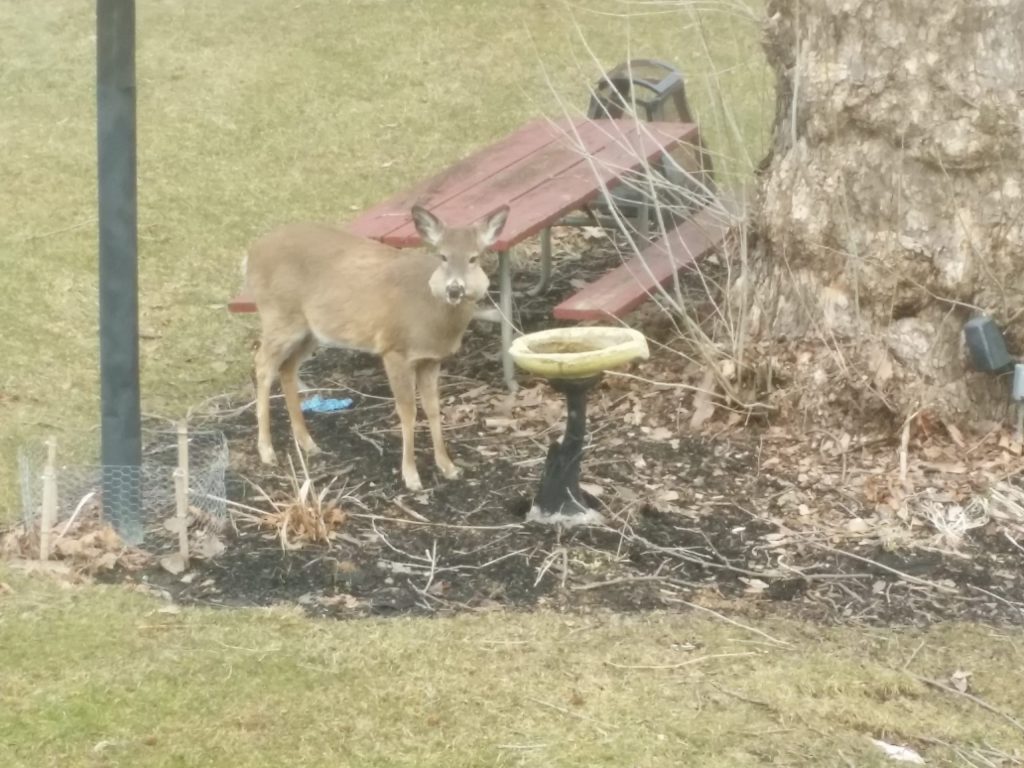We commonly get photos and questions about deer with visible swellings around their cheeks and jaw. Here are the top rule-outs for this deer (“rule-outs” are possible diagnoses that need to be eliminated to determine the cause of the disease):
Oral food impaction. Oral food impactions occur when food accumulates into a mass in the oral cavity. The impaction can occur under the tongue or between the teeth and cheeks. They can form on one or both sides. Oral food impactions are a clinical sign that is not specific to one cause, but rather can be associated with a few disease processes. The most common causes in white-tailed deer are dental disease, trauma to the inner lining of the oral cavity, or arterial worms.
Any damage to the oral cavity, including the teeth, gums, or lining of the oral cavity, can result in oral food impactions. Arterial worms (Elaephora schneideri) are worms that reside in the arteries of deer. Infections that disrupt blood flow to the head by blocking arteries in the neck (primarily the carotid artery) can result in oral food impactions as well as tooth loss and fractures or damage to the jaw bone. White-tailed deer infected with low numbers of worms typically do not show any clinical signs of infection.
Lumpy jaw. Lumpy jaw is the result of an infection of the jaw bone with bacteria, specifically Actinomyces bovis. This bacteria is commonly found in the oral cavity of healthy deer; however, disease can occur when the bacteria invades deeper tissues through cuts in the mouth or dental disease. Once infection becomes established, bacterial by-products break down existing bone and cause the growth of new bone as well as swelling. Affected deer have hard, swollen areas that are centered on the jaw bone or surrounding tissues of the face. Like oral food impactions, the swelling can occur on one or both sides of the face.
As with all of our photo diagnoses, the only way to confirm them would be to physically exam the deer. All of the conditions above can result in masses on the face of a deer that appears otherwise healthy. Distinguishing between oral food impactions and lumpy jaw can be done simply by looking at the composition of the mass. Is it food or a hard bony mass?
-Dr. Justin Brown, PGC Vet
(and his lovely assistant J.T. Fleegle)
If you would like to receive email alerts of new blog posts, subscribe here.
And Follow us on Twitter @WTDresearch
